Integrating Natural Materials in the Classroom
I’m happiest when I am outside in nature. I’ve noticed my students seem to be happiest outside too. Inspired by my summers at Seedlings, visits to Common Ground Environmental Education Center, and Seedlings facilitator Winnie Naclerio’s natural classroom at Calvin Hill, I was determined to further integrate the natural world into my classroom. -Julie Peterman
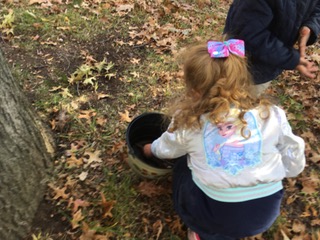
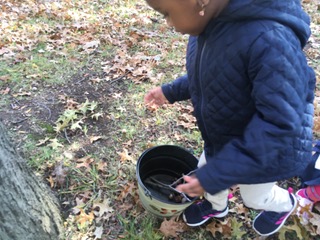
Viewing My Classroom from a Child's Perspective
Using Windows to Let in Nature

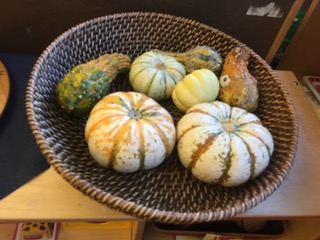
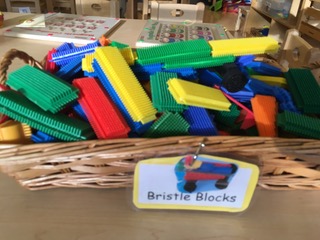
Change Up Classroom Learning Centers



Trade Colored Plastic Toys for Natural Materials

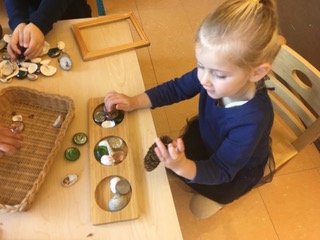
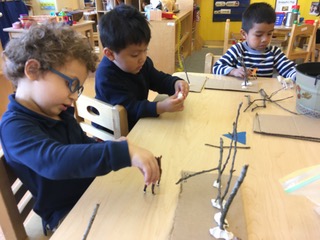
Your Passion and Curiosity are Contagious
As the school year goes on I continue my quest to help children become explorers in the world of natural materials. I could not be happier that most of my students share my love for and fascination with all that the natural world offers us. I am even more excited for each passing season to find things we can learn about and explore together.
The words of natural artist Andy Goldsworthy helped me understand the draw that natural materials have for my students and me: “We often forget that we are nature. Nature is not something separate from us. So when we say we have lost our connection to nature, we’ve lost our connection to ourselves.”
Bringing nature inside for our children to explore and engage with is one step toward regaining that connection.
Julie Peterman was one of our inaugural Seedlings Fellows and is now a K/1 Seedlings Facilitator. She brings the wisdom that comes with nearly four decades of teaching to Seedlings teachers to help them grow in their profession.


More from In My Classroom
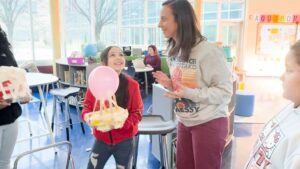
Watch Students Explore Gravity Concepts And Problem Solve through STEM
J.S. Martinez Magnet School’s STEM Resource Teacher Alyssa Granata-Basso welcomed Seedlings Educators Collaborative to observe students don their engineering hats in a hands-on problem-solving lesson exploring gravity. In teams, students designed, built, tested, and re-engineered a traveling vehicle to protect Alyssa’s friend “Eggbert” from the impact of landing.
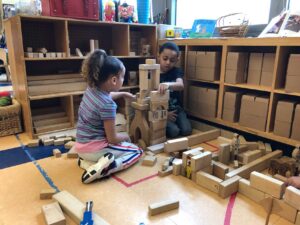
Reclaiming Kindergarten by Going Back to the Basics
As schools and districts place increasing emphasis on scores from high-stakes testing, teachers receive less autonomy in developing experiences and curriculum that engage students in meaningful learning. Over the course of one year, teachers revamped their kindergarten program, putting children’s development and interests in their rightful place as the centerpiece of curriculum by bringing play back into the classroom.
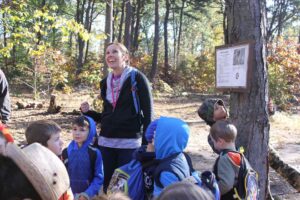
Jen Wilson’s Kindergartners Discover STEAM and Meaningful Connections in the Great Outdoors
Jen Wilson, kindergarten teacher at Cook Hill School in Wallingford, and the school librarian, Anna O’Brien, were awarded a grant from the Wallingford Education Foundation to develop a program they are calling KinderTinker. Jen and Anna are bringing the learning outside for extended free play and exploration, as well as structured STEAM-based activities that tie into the kindergarten science units.
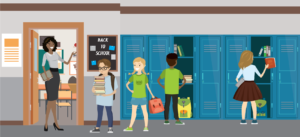
What should we expect from a 5th grader?
There are academic, behavioral and social-emotional benchmarks we expect of our general education students, no matter the year, but fifth grade, in particular, brings about new expectations as students move from lower elementary to more focused academic work, classroom transitions, and the need for organization and multitasking, among other important skills.

Animals in Winter: Student-Driven Learning to Explore Habitats
Jen Wilson’s kindergartners learn about shelter, safety, food (incorporating science, nature, math, engineering, literacy and art) through play- and project-based learning.

Hug a Tree: A Framework for STEAM Learning
Hug a Tree: A Theme for STEAM Learning Seedlings Facilitator Julie Peterman took her students out to look at trees for a meaningful learning experience. One warm late winter morning, Julie Peterman’s 3-year old class at Conte West Magnet School to were introduced to Nyree Hodges, an educator at Common Ground Urban Farm and Environmental
